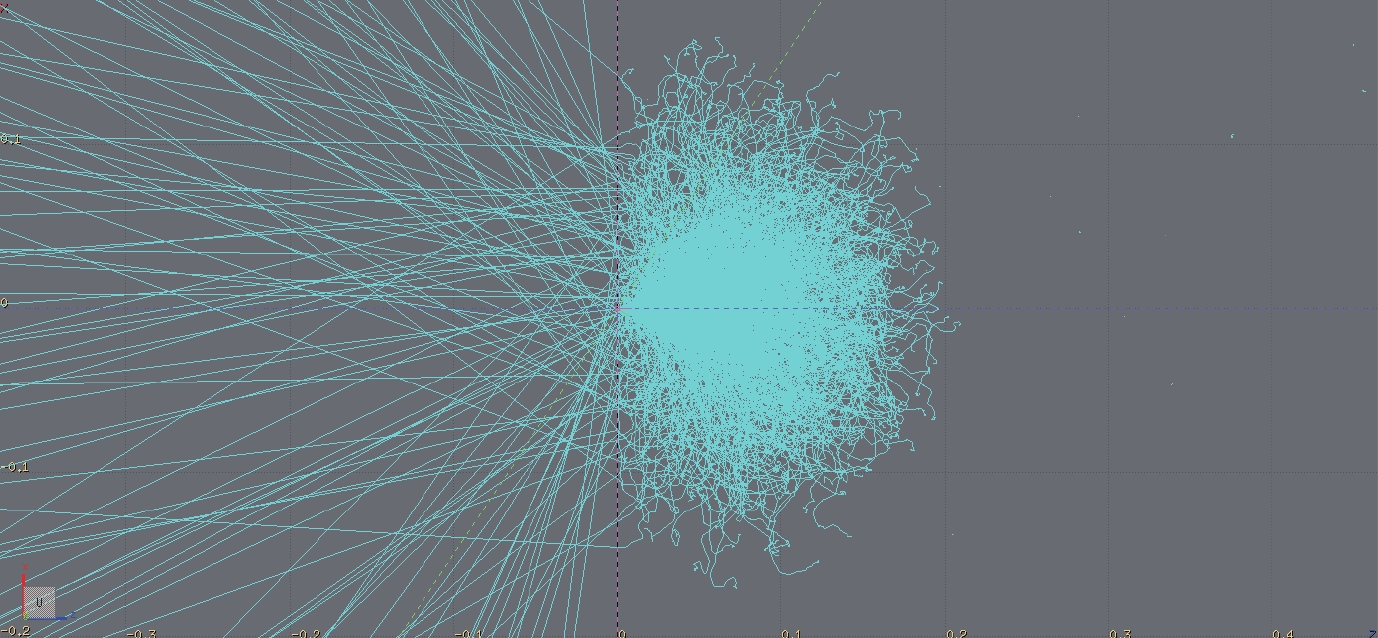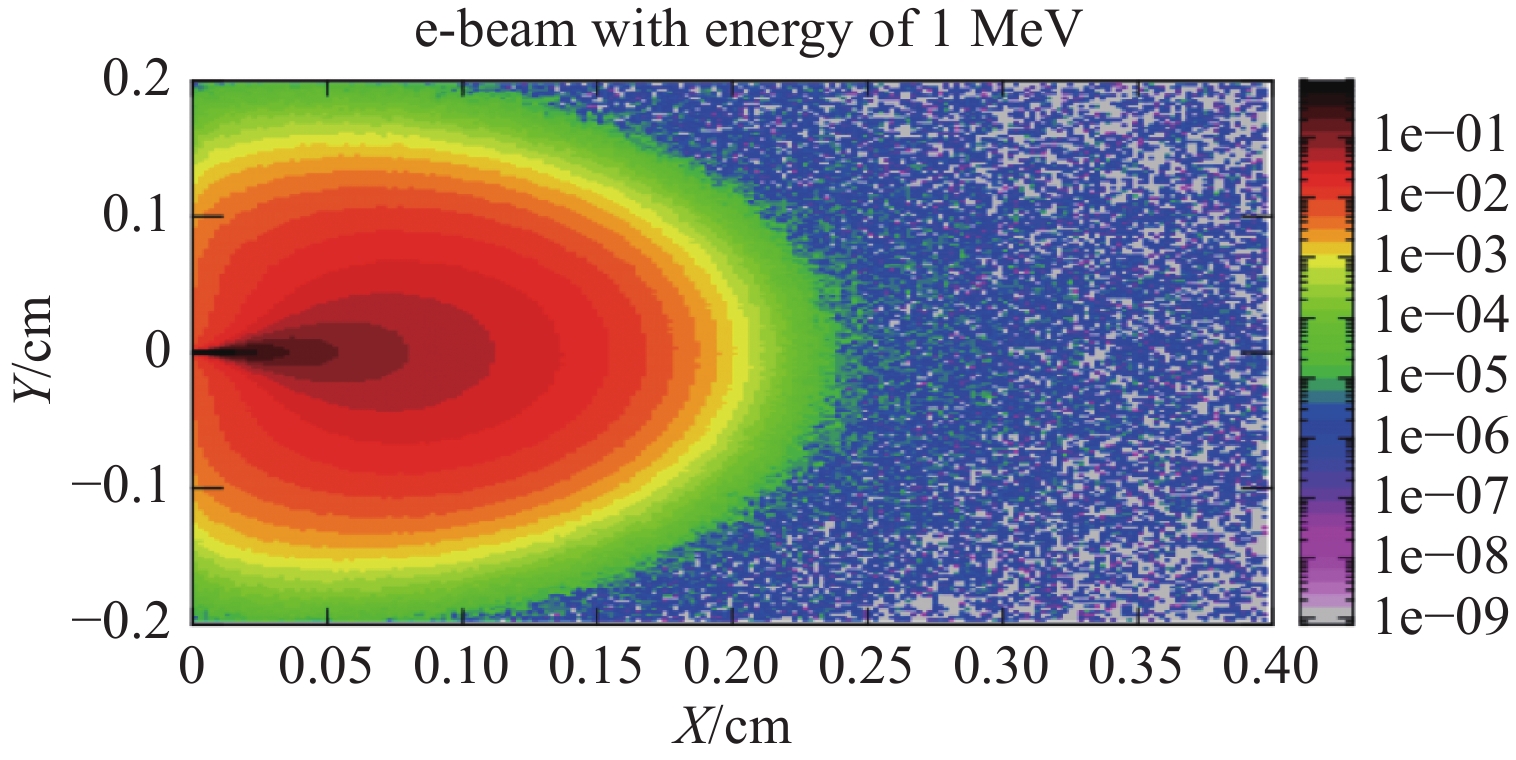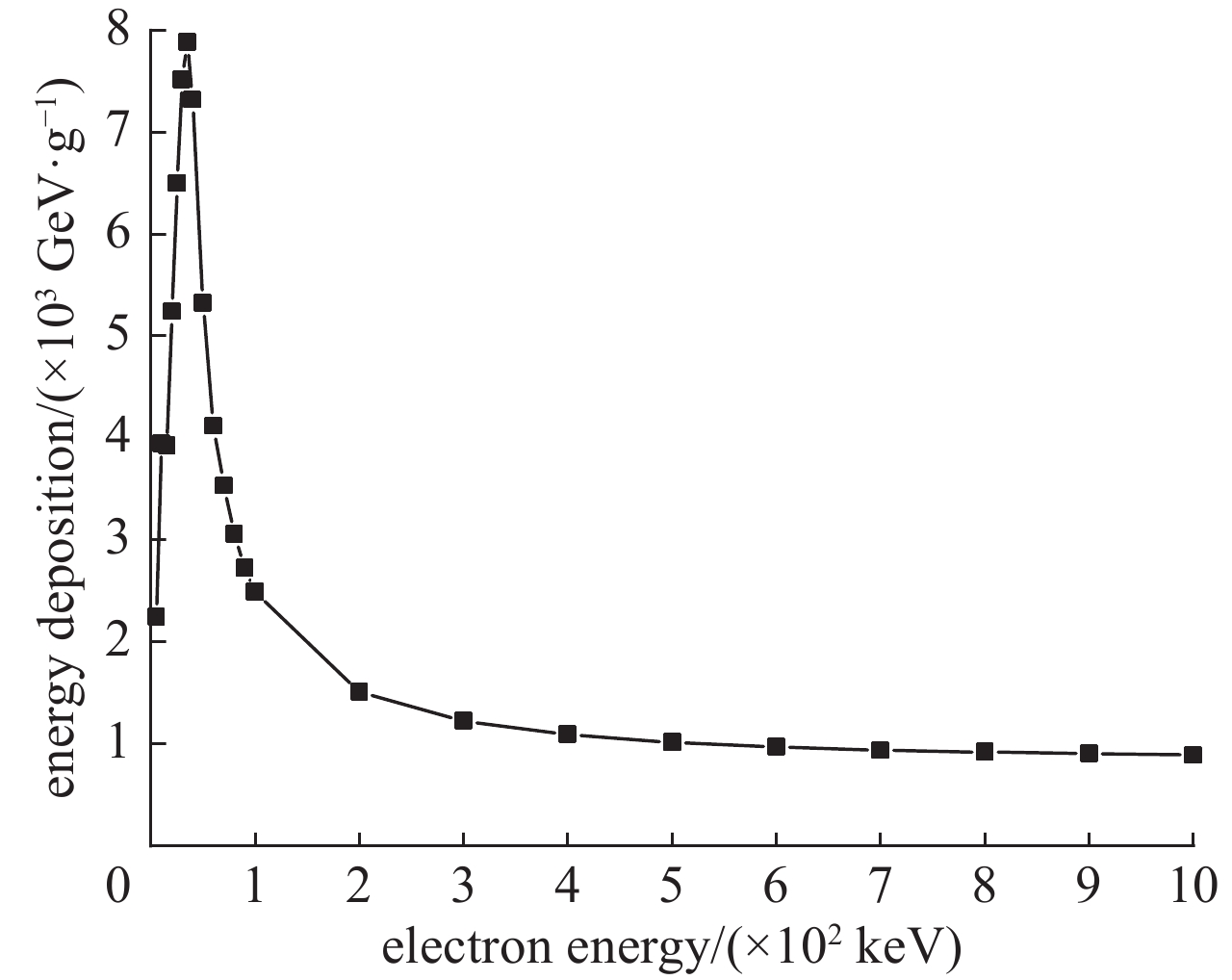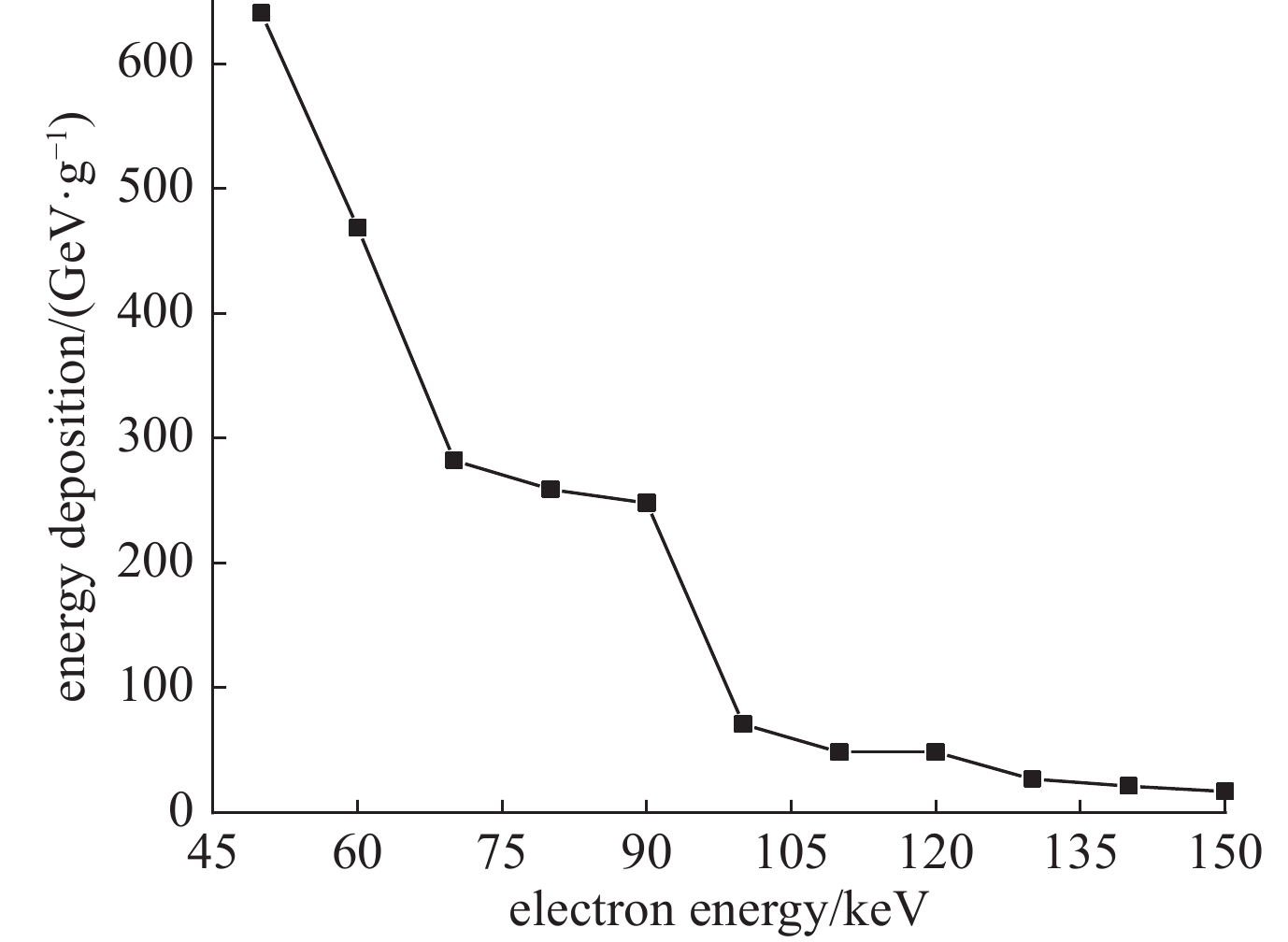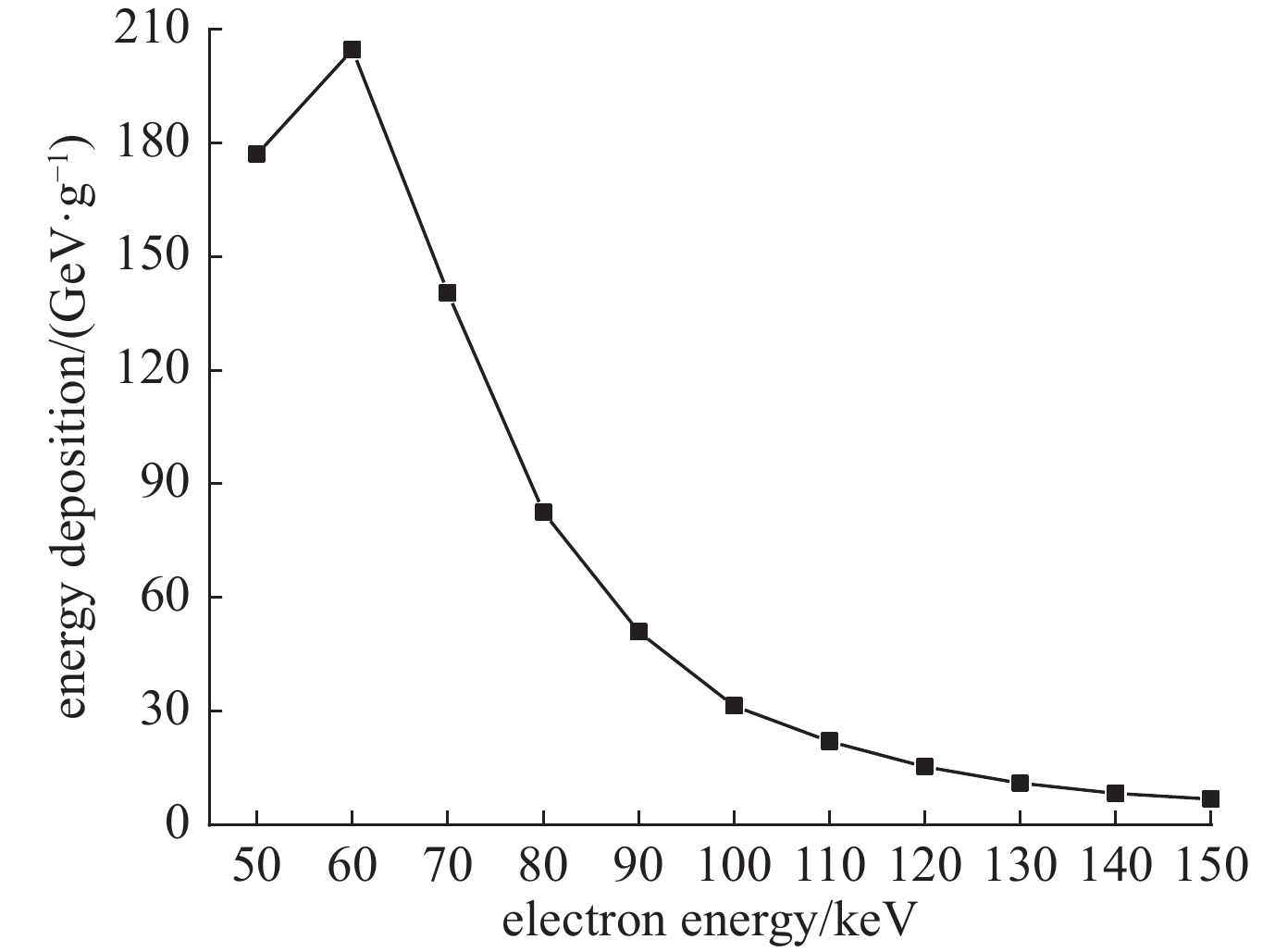Three-dimensional Monte Carlo simulation of electron radiation effects on CCD
-
摘要: CCD易受空间环境中高能电子辐射的影响,造成性能下降和工作异常,针对此问题,选取某国产N沟道3相多晶硅交迭栅、帧转移结构CCD开展了电子辐照效应研究。采用三维蒙特卡罗软件FLUKA建立电子辐照CCD的组成材料Si和SiO2模型,仿真模拟电子和材料相互作用的物理过程,计算不同能量电子在Si和SiO2中的总质量阻止本领和射程,与文献理论计算结果对比验证了本文仿真方法的正确性。建立CCD像元阵列的三维模型,模拟计算不同能量电子在CCD中能量沉积过程的影响,以及像元间有无边界对电子在CCD像元中平均原子离位(DPA)的影响,分析了辐照损伤差异产生的机理。结果表明,靠近入射点的像元能量沉积最大处对应的入射电子能量较小;对于无边界像元,电子辐照产生的DPA随入射深度的增加先增加后减小,而在有边界像元中产生的DPA随入射深度的增加先减小后增加,并且随入射深度的增加无边界像元中产生的DPA与有边界像元中产生的DPA差值越来越小。Abstract: As a key component, CCD has been widely used in space-based CCD cameras. However, it is vulnerable to the impact of high-energy electron radiation in space environment, resulting in performance degradation and abnormal operation. For this problem, a domestic N-channel three-phase polysilicon CCD with an overlapping gate and frame-transfer structure is selected to study the effect of electron irradiation. The models were established by FLUKA for Si and SiO2 irradiated with electrons, which are the composition material of CCD. We simulated the physical process of electrons and material interaction and calculated the total mass stopping power and range of different energy electron beams in Si and SiO2, then compared them with the theoretical results, and the correctness of the simulation method is verfied. A three-dimensional model of CCD pixel array was established. The effects of electron irradiation with different energy on the energy deposition process of electrons in CCD and the effect of between pixels on DPA (Displacement Per Atom) of electrons in CCD pixels were simulated and calculated. The mechanism of radiation damage difference is analyzed respectively.
-
Key words:
- CCD /
- electron irradiation /
- FLUKA /
- stopping power /
- range /
- energy deposition /
- displacement per atom
-
表 1 硅对电子的阻止本领
Table 1. Stopping power of silicon to electron
energy/
MeVsimulation result/
(MeV/cm)estar value/
(MeV/cm)error/% 0.8 3.870 1 3.609 2 7.2 0.9 3.746 9 3.581 2 4.6 1 3.606 9 3.567 2 1.1 1.25 3.488 1 3.562 6 2.1 1.5 3.416 6 3.583 5 4.7 表 2 二氧化硅对电子的阻止本领
Table 2. Stopping power of silicon dioxide to electron
energy/
MeVsimulation results/
(MeV/cm)estar value/
(MeV/cm)error/% 0.8 4.015 5 3.698 1 8.6 0.9 3.909 1 3.663 3 6.7 1 3.828 8 3.646 2 5.0 1.25 3.579 2 3.626 2 1.3 1.5 3.480 1 3.633 1 4.2 -
[1] Perinati E, Tenzer C, Santangelo A, et al. LEO radiation environment and the design of the micro-channel-plate X-ray telescope camera on-board the SVOM mission[J]. International Society for Optics and Photonics, 2012, 8443: 84434T. [2] 陈国珍, 林国成. 低地球轨道空间带电粒子辐射环境及其对航天器的影响[J]. 航天器工程, 1993(1):30-36. (Chen Guozhen, Lin Guocheng. Low earth orbit space charged particle radiation environment and its influence on spacecraft[J]. Spacecraft Engineering, 1993(1): 30-36 [3] Hopkinson G R. Radiation effects on solid state imaging devices[J]. Radiation Physics and Chemistry, 1994, 43(1/2): 79-91. [4] 薛利军, 段晓峰, 卫俊霞, 等. 航天CCD相机辐照测量技术[J]. 电子技术, 2011, 38(12):61-62,58. (Xue Lijun, Duan Xiaofeng, Wei Junxia, et al. Research on the measurement of radiation effect on CCD space camera[J]. Electronic Technology, 2011, 38(12): 61-62,58 doi: 10.3969/j.issn.1000-0755.2011.12.027 [5] Brau J E, Igonkina O B, Potter C T, et al. Investigation of radiation damage in the SLD CCD vertex detector[J]. IEEE Transactions on Nuclear Science, 2004, 51(4): 1742-1746. doi: 10.1109/TNS.2004.832965 [6] Stefanov K D, Tsukamoto T, Miyamoto A, et al. Electron and neutron radiation damage effects on a two-phase CCD[J]. IEEE Transactions on Nuclear Science, 2000, 47(3): 1280-1291. [7] 李豫东, 郭旗, 陆妩, 等. CCD在不同注量率电子辐照下的辐射效应研究[J]. 原子能科学技术, 2012, 46(3):346-350. (Li Yudong, Guo Qi, Lu Wu, et al. Research on electron irradiation damage effects of charge coupled device[J]. Atomic Energy Science and Technology, 2012, 46(3): 346-350 [8] Ferrari A, Sala P R, Fassò A, et al. FLUKA: A Multi-Particle Transport Code[R]. CERN-2005-10, 2005. [9] Böhlen T T, Cerutti F, Chin M, et al. The FLUKA code: developments and challenges for high energy and medical applications[J]. Nucl Data Sheets, 2014, 120(jun.): 211-214. [10] 薛院院, 王祖军, 刘静, 等. CCD质子辐照损伤效应的三维蒙特卡罗模拟[J]. 强激光与粒子束, 2018, 30:044001. (Xue Yuanyuan, Wang Zujun, Liu Jing, et al. Three-dimensional Monte Carlo simulation of damage effects of photon radiation on CCD[J]. High Power Laser and Particle Beams, 2018, 30: 044001 doi: 10.11884/HPLPB201830.170248 [11] Turner J E, Kelsey, Charles A. Atoms, radiation and radiation protection[J]. Phys Today, 1996, 49(1): 126-127,380. [12] 李星洪, 吴学超. 辐射防护基础[M]. 北京: 原子能出版社, 1982: 9-10Li Hongxing, Wu Xuechao. Fundamentals of radiation protection[M]. Beijing: Atomic Energy Press, 1982: 9-10 [13] Anderson H H, Berger M J, Bichsel H, et al. NIST: Introduction of ESTAR, PSTAR, and ASTAR[EB/OL]. https://physics.nist.gov/PhysRefData/Star/Text/ESTAR.html. [14] 汲长松. 核辐射探测器及其实验技术手册[M]. 北京: 原子能出版社, 1990Ji Changsong. Handbook of nuclear radiation detectors & their experiment techniques [M]. Beijing: Atomic Energy Press, 1990 [15] 沈自才, 夏彦, 杨艳斌, 等. 航天器空间辐射防护材料与防护结构[J]. 宇航材料工艺, 2020, 50(2):1-7. (Shen Zicai, Xia Yan, Yang Yanbin, et al. Protection of materials and structures from space radiation environments on spacecraft[J]. Areospace Materials & Technology, 2020, 50(2): 1-7 [16] Hengstler-Eger R, Baldo P, Beck L, et al. Heavy ion irradiation induced dislocation loops in AREVA’s M5® alloy[J]. Journal of Nuclear Materials, 2012, 423(1/3): 170-182. [17] Burchell T. Radiation effects in graphite and carbon-based materials[J]. MRS Bulletin, 1997, 22(4): 29-35. doi: 10.1557/S0883769400033005 -






 下载:
下载:
